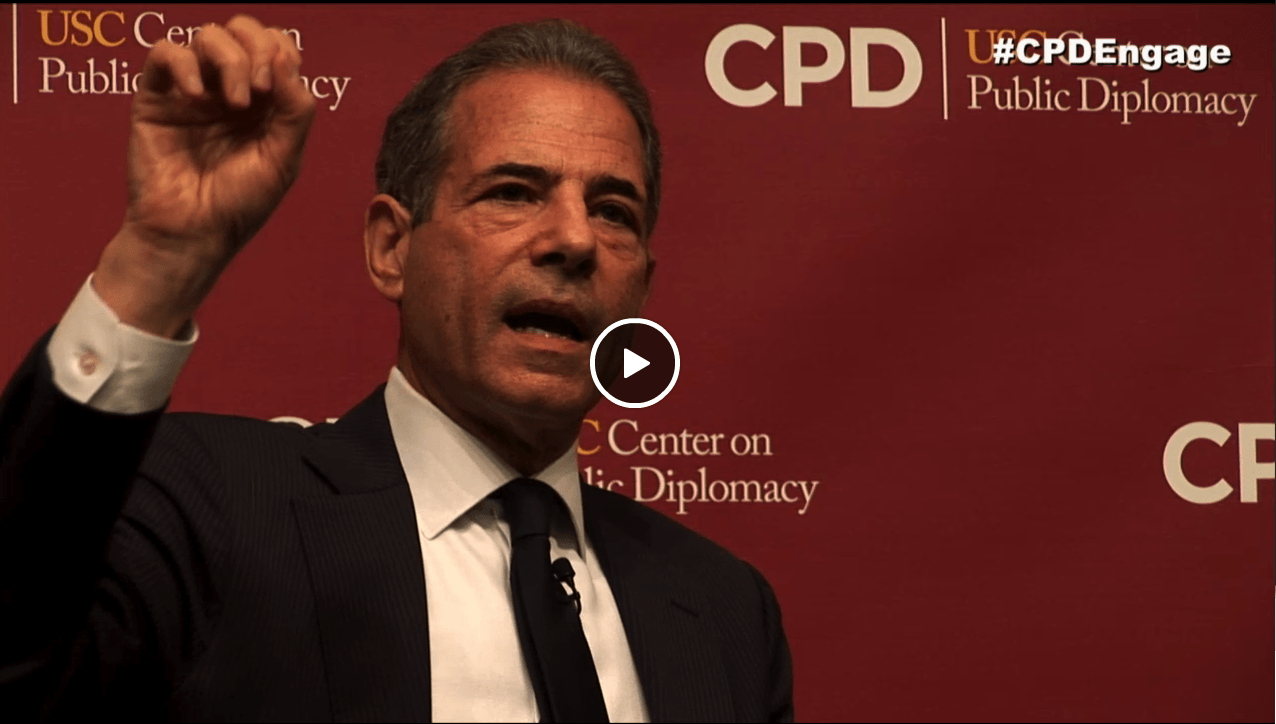Balancing Relationship Based and Policy Based PD Programming
Introduction
Public diplomacy activities are traditionally divided between exchanges, which are seen as policy neutral, and short term messaging, which pushes out the latest policy (see: http://www.state.gov/documents/organization/241430.pdf.) This division, in fact is reflected in the organization of U.S. public diplomacy sections abroad, which divide broadly into information and cultural sections. The general view is that cultural sections focus on developing lasting relationships through participation in exchanges often with a long-term payoff as contacts rise over a lifetime into positions of influence. The press side of the house does the heavy policy lifting, conveying U.S. policy to broad audiences and reacting quickly to short term developments.
- Cultural/Exchanges________________________________Press/Information
Long Term Short Term
Field Oriented Headquarters Oriented
Relationship Oriented Message Oriented
Largely Two (or more) Way Largely one way
With a vast literature on building collaborative networks, the balance in scholarly literature on PD weighs heavily in favor of the cultural/exchange part of PD and developing relationships with contacts. As Undersecretary for Public Diplomacy and Public Affairs Richard Stengel noted in an address at the U.S. Institute for Peace (http://uscpublicdiplomacy.org/event/cpd-forum-global-leadership-public-diplomacy), when public diplomacy in the US was created, there was a scarcity of information. This provided fertile ground for institutions such as VOA to broadcast news and other programming to information hungry audiences. We have now moved to an infinite supply of information where the real problem is scarcity of attention and ability to process.

David Ronfeldt and others remind us that technological developments such as ubiquitous cell phones, the Internet and social media have hastened the trend. They elevate many-to-many communication over traditional one-to many modes of the broadcast media. Dialogue is valued over messaging, which is viewed as close to propaganda. Thomas Keene, chair of the 9/11 Commission and chair Lee Hamilton emphasized that, “The U.S. government must define what the message is, what it stands for,” but also concluded, “Public diplomacy is not a one-way street. It is not delivering a message: It is communication … a process of engagement and developing relationships.” There are simply too many players able to convey their message for a government to have a monopoly of information. Although Americans in general have a particular talent for sitting down and having a conversation according to Undersecretary Stengel, he acknowledged that the State Department is much better at one way than two way communication.
Yet arguments can be made for a focus on the right hand side of the diagram as well. The power in the Department of State and US government resides with those who make policy, not those who carry out exchanges. In an era where one expects immediate results in domains from business to diplomacy and the rationale for PD funding is regularly called into question, one must build in some short term results in order to protect long term programs.
An effective senior PD officer must live, eat, and breathe US policy. The typical Public Affairs Officer (PAO) will start the day perusing and watching local media to gauge how issues that touch US policy interests are covered. A focus on US policy dominates the entire day from internal meetings to coffees or lunches with contacts such as journalists to representational events in the evening when PAOs may try to explain or defend US policy in multiple conversations. Even in the area of exchanges (the left-hand side of the cline), Washington ties programs closely to headquarter priorities as posts compete for a dwindling resources. Senior PAOs may spend just as much time and energy managing the Washington and internal Embassy relationships as those with their contacts.
In the next six blogs, I will try to argue that the view of cultural and information programs occupying different worlds is a false one which blinds us to areas of overlap and synergy. I will show that money spent on long term exchanges is not a wasted resource that could better be spent supporting short term goals as some argue. I will also show that it is possible to tie exchanges to short term goals without sacrificing program integrity. The biggest payoff should still remain the long term benefit as alumni of our programs often become the most credible interpreters if not advocates for our policy. Meanwhile academics studying public diplomacy often forget that the underlying rationale for public diplomacy is to support policy objectives.
I will attempt to bridge the gap with suggestions for making exchanges more policy oriented and messaging more dialogic. I will recommend that scholars of PD devote more time and attention to activities that support policy and that are key to how government measures the success of PD programming. I will also recommend that headquarters review the importance of establishing and maintaining long term relationships.
In the next two blogs I will focus on internal relationships within the Department of State bureaucracy and maintain that the most important public diplomacy is often internal to the organization. Blog four will focus on the exchange side of the equation with suggestions for garnering more short term payoffs. Entry five will include a model which eliminates the exchange policy gap altogether with a focus on policy with indirect and direct goals. Entry six will include recommendations for both scholars of PD and practitioners within the government for bridging the gap between long term exchanges and short term policy PD. The final entry will describe pedagogical implications of a more policy-focused approach.
Disclaimer: The opinions and characterizations in this article are those of the author and do not necessarily reflect official positions of the United States Government.
This is the first of a seven-part series of posts. See part two here.
